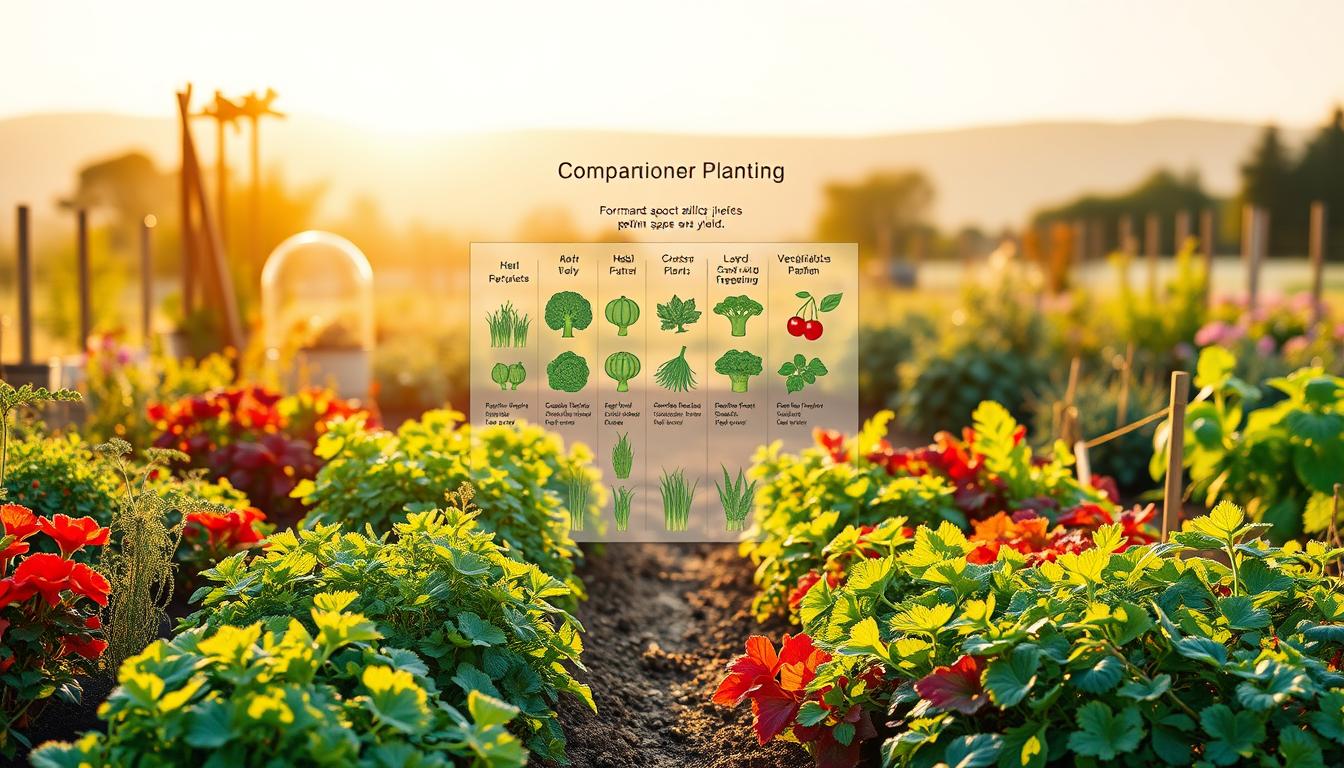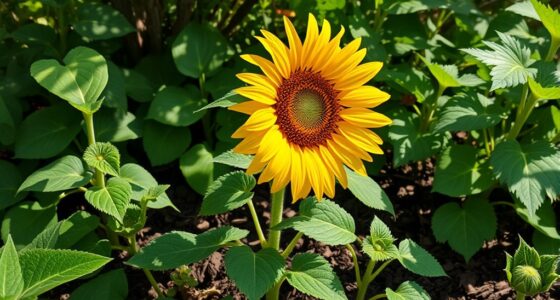Have you ever stood in your garden, feeling an overwhelming connection to the earth beneath your feet? Gardening is more than just a hobby; it’s a journey of growth, patience, and nurturing. You may have witnessed how a simple partnership between two plants can transform a patch of soil into a lush, thriving paradise. That’s the beauty of garden companion planting. This age-old technique not only enhances the health and yield of your plants, but it also empowers you to create a harmonious ecosystem right in your backyard. With our comprehensive companion planting chart, you can maximize your garden’s potential and enjoy a bountiful harvest, while naturally keeping pests at bay. Let’s dive into the world of companion planting, where every plant has a purpose and every garden tells a story.
Key Takeaways
- Companion planting fosters mutually beneficial relationships between plants.
- The right pairings can boost health and yield while naturally deterring pests.
- Using a companion planting chart helps in selecting compatible plants.
- Caring for your garden with companion planting enhances your gardening experience.
- Understanding plant interactions is crucial for successful garden management.
- Your garden can thrive through thoughtful planning and plant partnerships.
What is Companion Planting?
Understanding the concept of companion planting can greatly enhance your gardening experience. This practice involves growing different plants in close proximity to each other, promoting mutual benefits that can lead to a more successful garden. The definition of companion planting extends beyond just physical closeness; it encompasses the idea of fostering relationships between various plant species to improve growth, flavor, and pest management.
Definition and Importance
The definition of companion planting reveals a fascinating aspect of horticulture. It emphasizes the idea that certain plants can thrive alongside one another while providing support such as shade, nutrients, or protection from pests. This symbiotic relationship can significantly impact the overall health of your garden.
Historical Context
Historically, companion planting has roots in many farming and gardening traditions. Indigenous cultures, such as those in the Americas, employed this method for centuries, particularly visible in the cultivation of the “Three Sisters”: corn, beans, and squash. Such practices illustrate the timeless wisdom behind growing plants in harmony.
Benefits for Your Garden
The benefits of companion planting are numerous. By integrating different plants, you can achieve improved pest control through natural deterrents, increased pollination from diverse flower varieties, and enhanced soil health due to the dynamic interactions among the plants. These advantages create a nurturing environment where plants can flourish effectively.
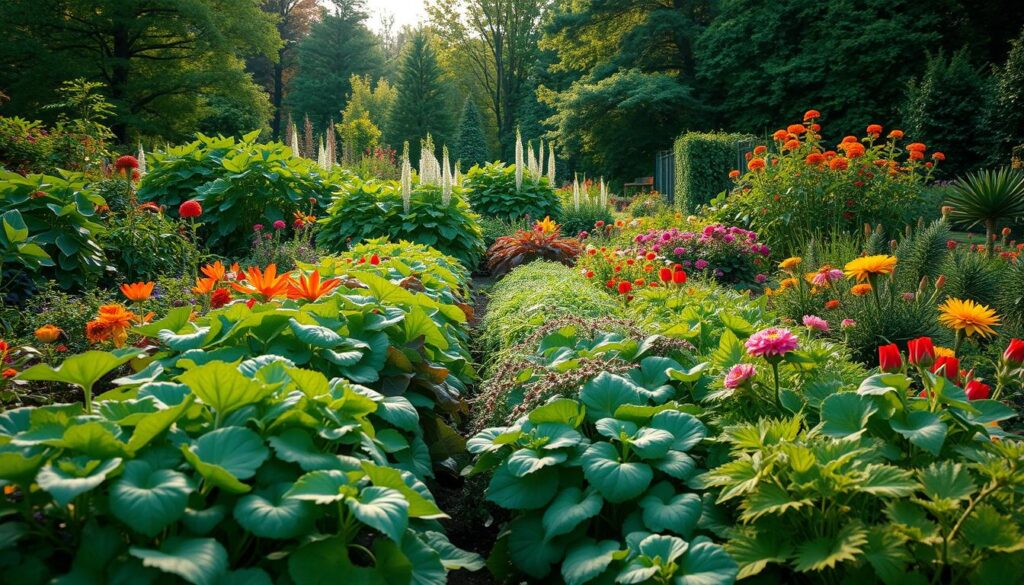
How Companion Planting Works
Understanding how companion planting works involves exploring several fascinating processes that benefit your garden. By utilizing natural plant relationships, you can create a thriving ecosystem that supports growth, protects plants, and enhances overall health.
Allelopathy Explained
One key mechanism in companion planting is allelopathy. This occurs when certain plants release chemicals that can inhibit the growth of unwanted species, including weeds and certain pests. For instance, some herbs and flowers, such as marigolds, can effectively deter harmful organisms from overtaking your garden.
Nutrient Sharing
Plants often collaborate underground, sharing nutrients through their root systems. This cooperation allows for a more nutrient-rich soil profile, benefiting all plants involved. For example, legumes can fix nitrogen in the soil, which can be utilized by neighboring plants, promoting more robust growth.
Pest Repellent Effects
Many plants exhibit remarkable pest repellent effects. Specific combinations, like basil paired with tomatoes, ward off pests such as aphids and moths, keeping your crops healthier and potentially improving their yield. These natural defenses minimize the need for chemical interventions, creating a more organic garden experience.
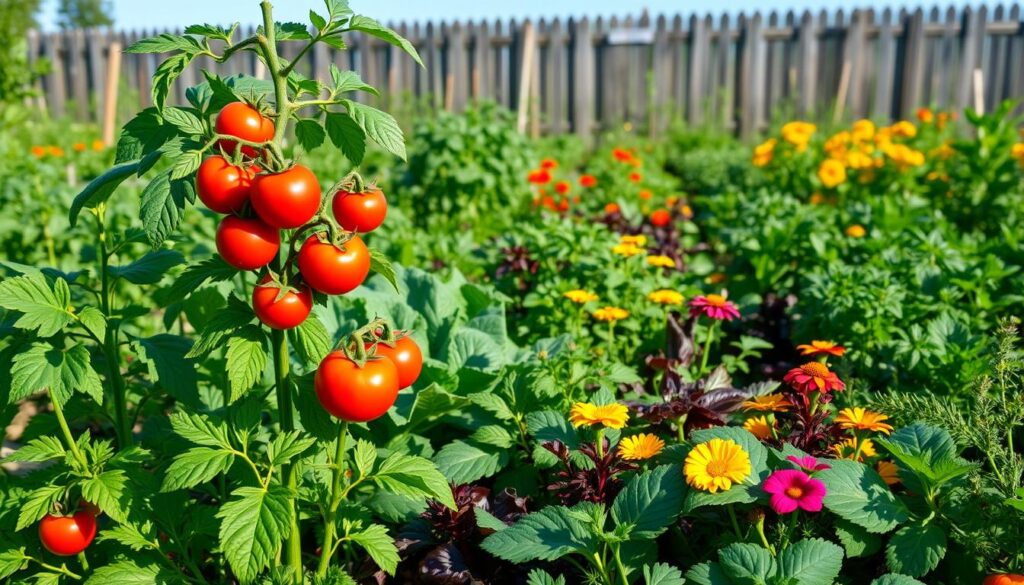
Key Factors to Consider
When embarking on your companion planting journey, several key factors in companion planting can affect your success. Understanding the environment and the plants involved is crucial. Each element plays a vital role in determining how well your garden will thrive.
Climate and Soil Conditions
The climate for companion planting varies significantly based on geographical location. Some plants flourish in warm, sunny conditions while others prefer cooler climates. Consider your local weather patterns and the specific needs of the plants you wish to grow. Soil conditions also demand attention; well-draining soil enriched with organic matter can boost the growth of many companion plants.
Plant Growth Habits
Understanding plant growth habits can enhance your companion planting strategy. Taller plants can provide shade for shorter companions, protecting them from harsh sunlight. Furthermore, deeply rooted plants can improve soil aeration and moisture retention, benefiting neighboring crops.
Seasonal Timing
Seasonal timing proves to be a critical determinant in the success of your plant pairings. Some crops thrive in the cooler months, while others require the heat of summer to flourish. Aligning your planting schedule with the best seasonal timing for each crop will ensure optimal growth and yield.
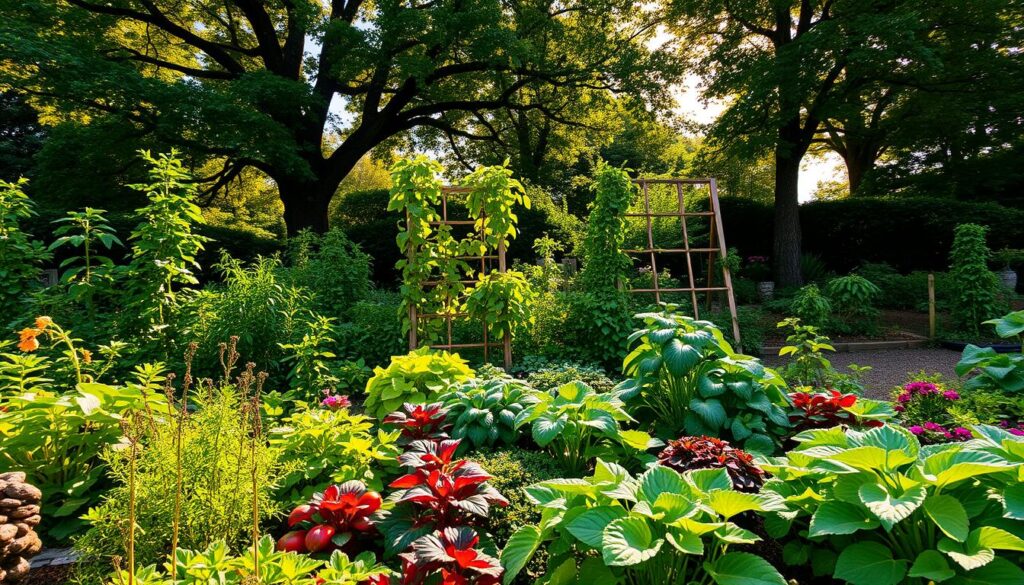
| Factor | Description | Impact on Companion Planting |
|---|---|---|
| Climate | Local weather patterns and temperature | Determines plant suitability |
| Soil Conditions | Quality and composition of soil | Affects growth and nutrient availability |
| Growth Habits | Height and root structure of plants | Influences shading and nutrient sharing |
| Seasonal Timing | Ideal planting and harvesting times | Optimizes growth and productivity |
Popular Companion Planting Pairings
Understanding the art of companion planting can lead you to some of the most effective and beneficial pairings for your garden. Popular vegetable pairings not only maximize space but also enhance flavor and yield. Exploring some of the best combinations will help you create a thriving garden ecosystem.
Tomatoes and Basil
One of the most renowned companion planting vegetables is the pairing of tomatoes and basil. Basil can enhance the flavor of tomatoes while providing a layer of pest resistance. The aroma of basil confuses pests such as aphids and whiteflies, keeping your tomato plants healthier. A great choice for enhancing your culinary garden!
Carrots and Onions
This combination is perfect for deterring pests. Carrots thrive when planted alongside onions, as onions help keep carrot flies at bay. With this popular vegetable pairing, both plants grow well together, and you can enjoy a bountiful harvest without compromising your garden’s integrity.
Cabbage and Dill
Cabbage and dill exemplify another excellent example of companion planting. Dill attracts beneficial insects like ladybugs, which help control aphids on cabbage plants. This best combination not only supports cabbage growth but also promotes a healthier garden environment overall.
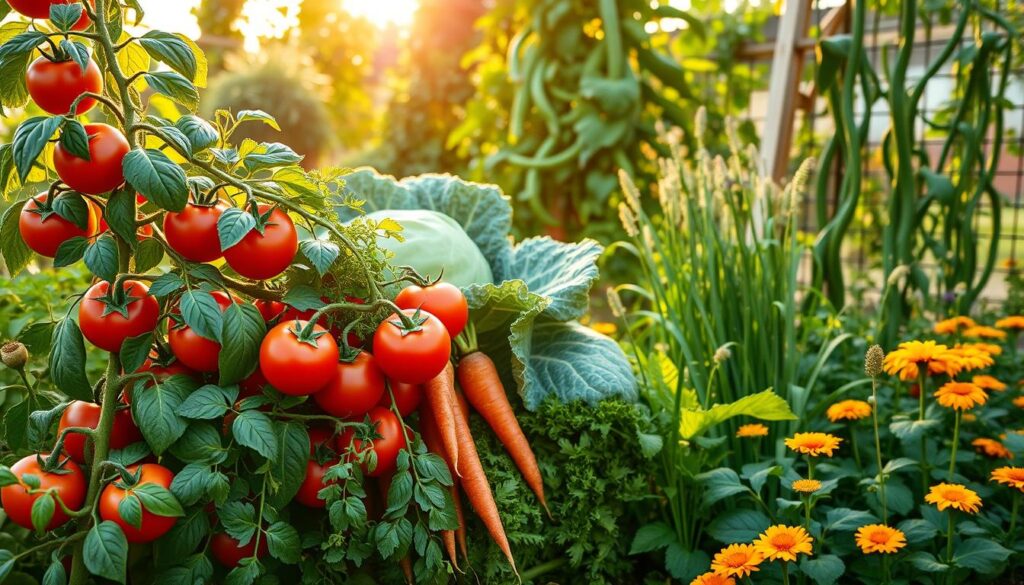
Plants to Avoid Pairing
When planning your garden, understanding which plants to avoid is essential for a thriving ecosystem. Certain plant combinations can lead to negative effects on plant growth, hindering both yield and health. Recognizing incompatible combinations can help you maintain a more productive garden.
Incompatible Combinations
Some plants simply do not work well together. For example, tomatoes and corn both attract the same pests, creating a competition that can weaken your plants. Fennel, known for its fragrant stalks, often inhibits the growth of nearby plants when grown in proximity. Recognizing these incompatible combinations is crucial for garden success.
Negative Effects on Growth
Pairing incompatible plants can lead to stunted growth, pest proliferation, and nutrient deficiency. For instance, if you plant beans near onions, the beans may struggle to establish themselves due to the onions’ allelopathic effects. Understanding the negative effects on plant growth caused by wrong pairings can save you time and frustration.
How to Identify Problematic Plants
Identifying plants to avoid involves researching specific species and their interactions. Consider consulting reliable gardening resources or app guides which can provide insights into compatibility. Observing your garden over time and noting which combinations lead to difficulties can further help you pinpoint problematic plants and adjust your strategy accordingly.

Creating Your Own Companion Planting Chart
Creating a companion planting chart allows you to visualize the ideal pairings in your garden. To begin the process, you should assess your growing environment, considering aspects like soil type and climate. Once you gather this information, developing a personalized planting chart becomes straightforward and rewarding.
Step-by-Step Guide
Start by listing the plants you want to grow. Research which plants thrive together and jot down successful combinations. Use the following steps to guide you:
- Identify your planting zone.
- Choose plants that complement each other.
- Document their growth habits and watering needs.
- Arrange them visually on your chart.
Tools You Might Need
When engaging in tools for gardening, consider utilizing the following items:
- Gardening journals to track your plant pairings.
- Mobile apps for logging growth data.
- Graph paper for a visual layout of your garden.
- Pencil and eraser for tweaking arrangements easily.
Personalizing for Your Garden
Your personalized planting chart should reflect the unique conditions of your garden. Adjust the chart as you discover successful pairings or observe changes in your garden’s ecosystem. Don’t hesitate to experiment. Each season presents a chance to learn and optimize your plants’ relationships further.

| Plant | Ideal Companion | Benefits |
|---|---|---|
| Tomato | Basil | Improves flavor, repels pests |
| Carrot | Onion | Prevents pests, maximizes space |
| Cabbage | Dill | Enhances growth, attracts beneficial insects |
Companion Planting for Vegetables
Exploring vegetable companion planting can significantly enhance your gardening experience. Understanding the best partnerships between vegetables allows you to optimize space, nutrient levels, and overall garden health. By strategically selecting companions, you can achieve remarkable results in both flavor and yield.
Best Vegetable Partnerships
When considering vegetable companion planting, combinations like tomatoes and basil emerge as favorites. Basil not only enhances the flavor of tomatoes but also acts as a pest deterrent. Another effective pairing is beans and corn; beans can fix nitrogen in the soil, benefiting corn’s growth. These partnerships illustrate how certain vegetables thrive together, creating a harmonious and productive garden.
Maximizing Yield and Flavor
Maximizing yield is essential for any gardener, and thoughtful combinations can make a significant impact. Incorporating herbs like cilantro alongside vegetables such as carrots can improve flavor while attracting beneficial insects. The right companions can lead to bountiful harvests, allowing you to enjoy both the quantity and quality of your produce.
Seasonal Vegetable Planting
Seasonal planting strategies enhance the effectiveness of your vegetable companion planting. For example, pairing fast-growing radishes with slower-growing carrots optimizes your garden’s productivity. Interplanting like this ensures that every inch of your space is utilized efficiently over the growing season. Paying attention to seasonal needs helps you plan and execute a thriving vegetable garden.
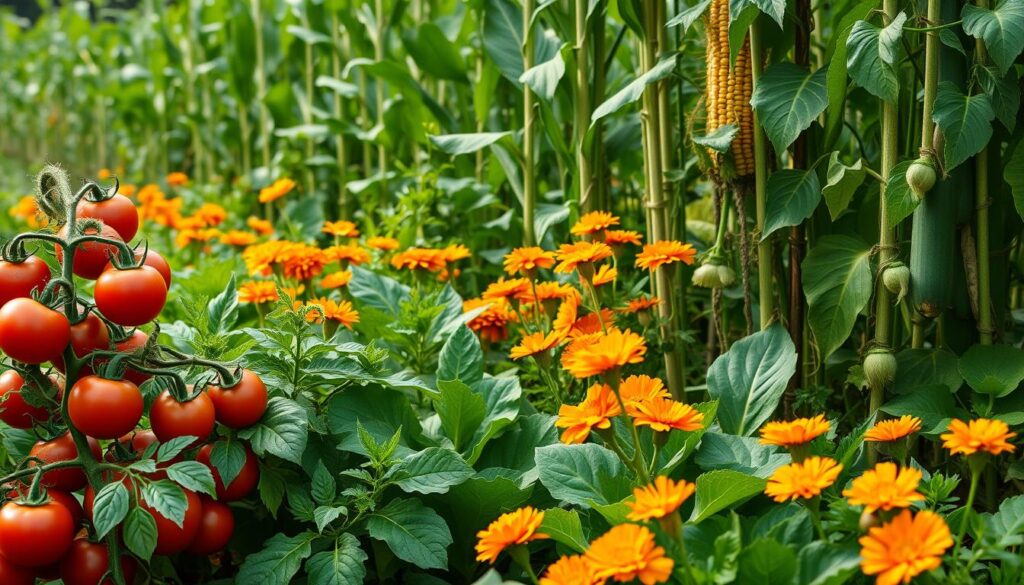
Companion Planting for Herbs
In the world of gardening, companion planting herbs play a crucial role in creating a thriving environment. These herbs can greatly enhance both flavor and growth in your vegetable garden. Choosing the right herb combinations not only elevates the taste of your meals but also contributes to improving the overall health of your plants.
Ideal Herb Combinations
When selecting companion planting herbs, consider the following ideal combinations:
- Basil — pairs wonderfully with tomatoes
- Chives — a great match for carrots
- Peppermint — benefits cabbage plants
- Oregano — complements peppers
Benefits for Flavor and Growth
Companion planting herbs can add unmatched flavor to your dishes. Herbs boost the growth potential of their neighboring plants, providing improved yields and healthier produce. By mixing the right herbs with vegetables, you create an environment where both can thrive mutually, leading to enriched garden experiences.
Herbs That Deter Pests
Not all herbs serve just culinary purposes; many herbs that repel pests are essential for natural pest management. Consider integrating the following herbs in your garden:
- Rosemary — deters cabbage moths
- Sage — effective against carpenter bees
- Lavender — repels a variety of pests including moths and flies
- Thyme — can keep away whiteflies

Companion Planting for Flowers
When planning your garden, incorporating companion planting flowers can greatly enhance both the visual appeal and ecological health of your space. Choosing the right flower pairings can create a symbiotic relationship among plants, benefiting not only their growth but also the garden’s overall aesthetics.
Enhancing Garden Aesthetics
Flowers serve as vibrant focal points that can elevate the design of your garden. By strategically selecting companion planting flowers, you can create harmonious color schemes and beautiful contrasts that make your garden truly spectacular. For instance, combining bright marigolds with soft pastel petunias brings a burst of color while ensuring the flowers are also functional in the ecosystem.
Biodiversity Benefits
Incorporating a variety of flowers can boost biodiversity in your garden. Flowers attract beneficial insects and pollinators, which play a crucial role in maintaining a healthy garden ecosystem. This diversity not only makes your garden more visually appealing but also establishes an environment rich in life, promoting better growth for all plants involved.
Specific Flower Pairings
Utilizing specific flower pairings can yield fantastic results. For example, planting calendula alongside tomatoes not only helps keep pests at bay but also adds a splash of color. Other beneficial combinations include:
- Lavender with rosemary for a fragrant border and pest control.
- Nasturtiums paired with cabbage to deter aphids.
- Sunflowers alongside beans to provide support and attract pollinators.

By thoughtfully selecting companion planting flowers, you create an enchanting garden that delights the senses and fosters ecological harmony. Dive into the creative possibilities!
Dealing with Common Garden Pests
Managing pests in the garden doesn’t have to rely solely on chemical solutions. Smart gardeners utilize companion plants for pest control, harnessing the power of nature to create a balanced ecosystem. These plants not only deter troublesome pests but also enhance your garden’s health and productivity.
Companion Plants as Natural Deterrents
Many plants possess unique features that fend off common garden invaders. For example, marigolds emit fragrant oils that repel nematodes, making them excellent companions for various vegetables. Similarly, basil can deter flies and mosquitoes while attracting pollinators. By incorporating these natural deterrents, you create a healthier garden environment.
Strategies for Pest Management
Effective pest management involves strategic planning. You can interplant pest-repellent herbs and flowers throughout your vegetable patches. This method not only minimizes pests but encourages beneficial insects to thrive. Regular monitoring of your garden will help you quickly identify pest issues and adapt your pest management strategies accordingly.
Examples of Effective Plant Combos
Certain combinations are particularly effective in fighting pests. Pairing nasturtiums with your vegetable crops can deter aphids and whiteflies. Alternatively, planting chives alongside carrots can help keep carrot flies at bay. These plant combos illustrate how diverse companion plants can enhance your garden’s natural defenses.

Seasonal Companion Planting Tips
Understanding seasonal companion planting can significantly enhance the productivity of your garden throughout the year. Each season brings unique opportunities and challenges that can influence planting strategies. By aligning your efforts with agricultural cycles, you can ensure a thriving garden.
Spring Planting Strategies
In spring, focus on planting cool-season crops such as lettuce, peas, and radishes. These plants thrive in the cooler temperatures and can be paired with companions like carrots and spinach. Utilizing these combinations allows for efficient use of space and encourages healthy growth.
Summer Growth Considerations
As summer heats up, you will want to incorporate heat-loving plants such as tomatoes, peppers, and basil. These plants benefit from the shade provided by taller companions like sunflowers and corn, making it essential to consider their positioning in your garden. Seasonal companion planting during summer ensures adequate sunlight and water for all plants.
Fall Harvest Companions
In fall, you can extend your gardening season with strategic pairings. Consider planting spinach alongside late summer crops like squash. This approach maximizes your harvest while utilizing the remaining warmth in the soil. Remember to plan your planting strategies based on the shorter days of fall, enabling a bountiful end to your gardening year.
| Season | Recommended Crops | Companion Plants |
|---|---|---|
| Spring | Lettuce, Peas, Radishes | Carrots, Spinach |
| Summer | Tomatoes, Peppers, Basil | Sunflowers, Corn |
| Fall | Spinach, Squash | Radishes, Garlic |
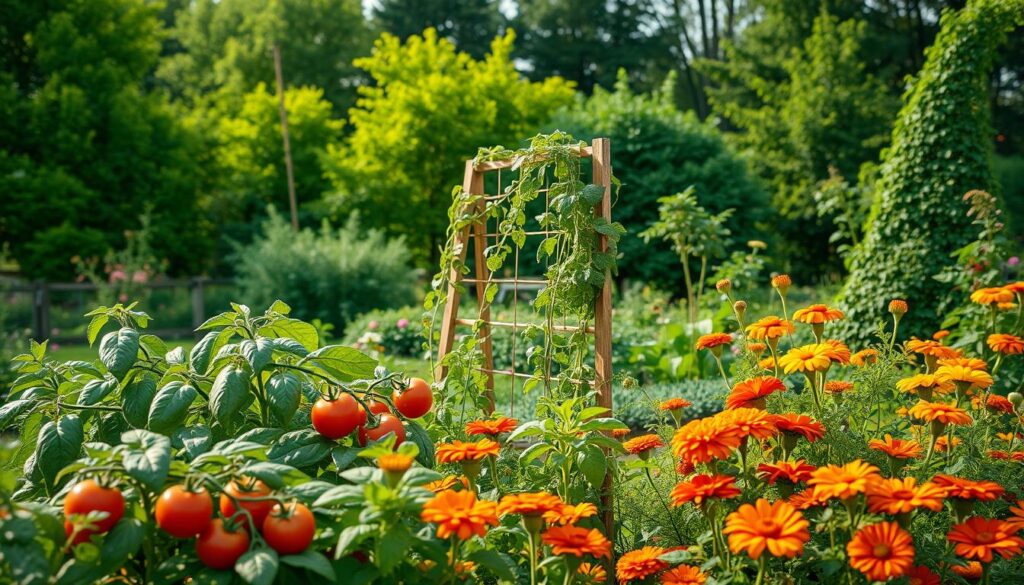
Resources for Companion Planting
Diving into the world of companion planting can be an enriching experience, especially with the right resources at your disposal. You’ll find various options tailored for both novice and experienced gardeners alike. Online gardening tools can provide personalized planting advice, while books and community platforms foster knowledge-sharing. Let’s explore some of these essential companion planting resources.
Online Tools and Apps
Several online gardening tools offer features like customized companion planting charts. These tools can help you determine the best plant pairings based on specific garden conditions, ensuring your plants thrive together. Popular options include:
- Garden Planner: A digital tool to visualize your layout.
- My Garden: An app that tracks plant care and growth.
- Plant Companion: Provides suggestions for optimal planting combinations.
Books and Guides You Should Read
Books serve as a valuable resource when learning about effective companion planting strategies. Recommended titles include:
| Book Title | Author | Description |
|---|---|---|
| The Vegetable Gardener’s Bible | Ellen Ogden | A comprehensive guide covering various gardening techniques, including companion planting. |
| Carrots Love Tomatoes | Bob Flowerdew | Focuses on the best plant pairings to maximize garden health and yield. |
| Companion Planting for Beginners | Alison E. Foster | A useful resource for novices looking to get started. |
Community Forums and Groups
Engaging with fellow gardeners can enhance your understanding of companion planting. Numerous online forums and local community groups provide platforms for sharing experiences, tips, and advice:
- Reddit’s r/gardening: A vibrant community for all things gardening.
- The GardenWeb Forums: A place to discuss garden techniques and ask questions.
- Local gardening clubs: Often offer workshops and events that focus on companion planting.
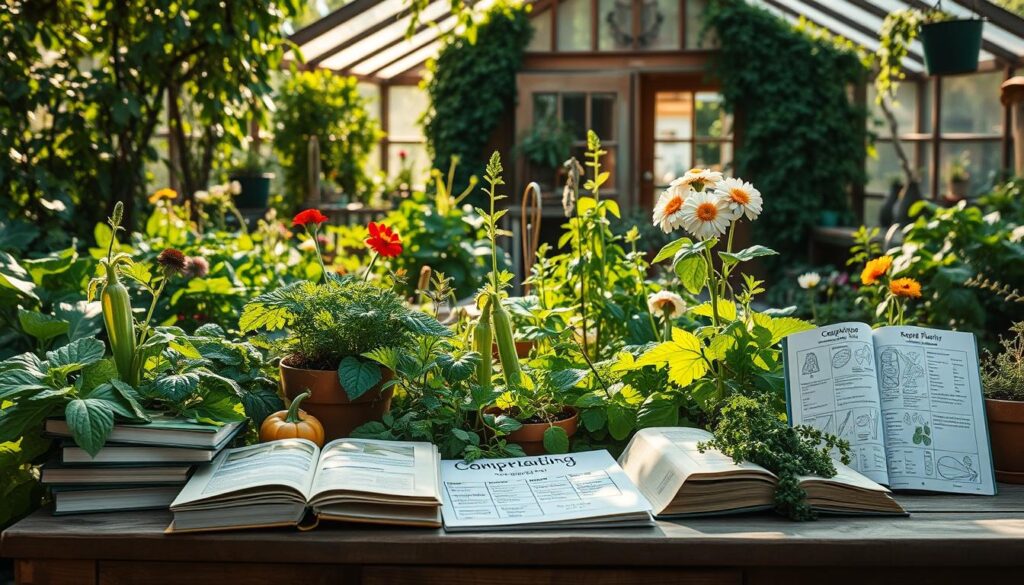
Conclusion: Embrace Companion Planting for a Thriving Garden
As you reflect on the benefits of companion planting, it becomes clear that adopting this gardening technique can significantly contribute to a thriving garden. Not only do beneficial plant pairings enhance productivity and deter pests, but they also create a healthier ecosystem overall. By implementing these strategies, you will foster an environment where your plants can flourish.
Don’t hesitate to experiment with various combinations to discover what works best for your specific space. Each garden is unique, and trying different pairings can lead to unexpected delights and insights about your plants’ needs. With the right mindset and a willingness to adapt, you will fine-tune your methods and enjoy the fruits of your labor.
Lastly, keep these tips for successful planting in mind: observe the growth patterns of your companion plants, adjust your strategies based on seasonal changes, and note which combinations yield the best results. With patience and a spirit of adventure, you are well on your way to a flourishing garden that showcases the outstanding potential of companion planting.
